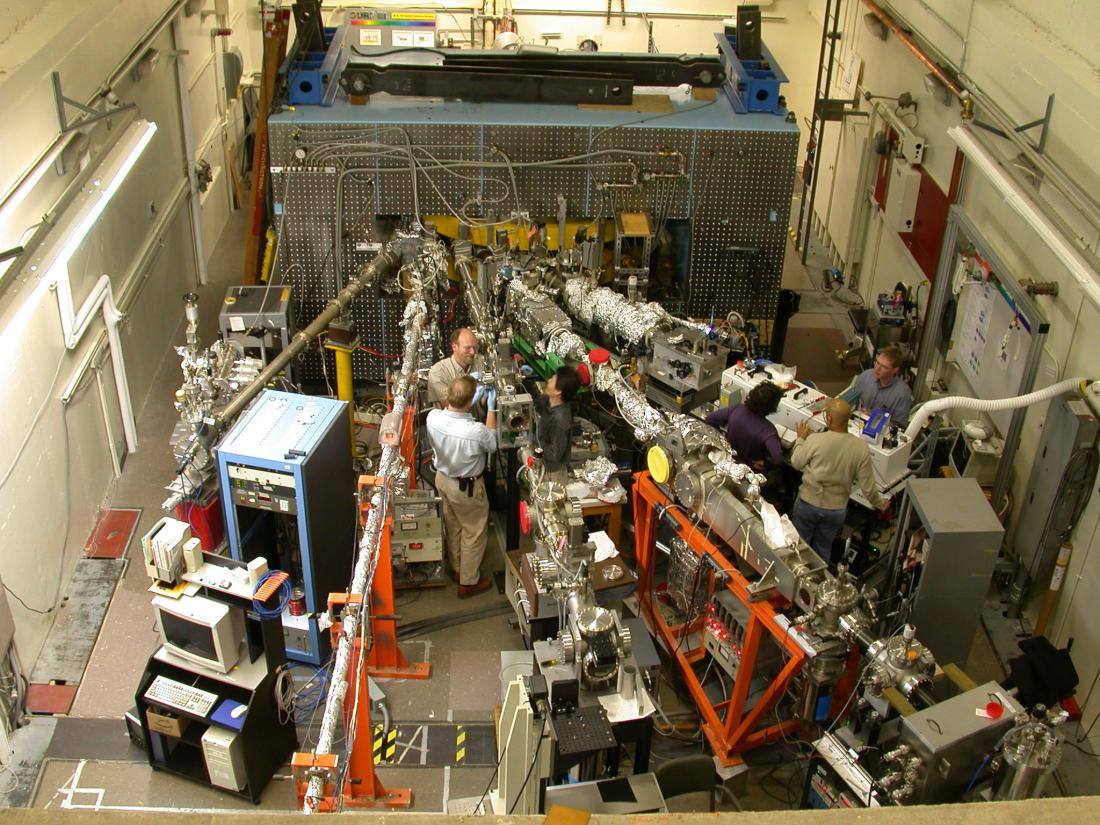From The National Institute of Standards and Technology
4.23.24 [Just today from the institution]
Chantal Polsonetti

Credit: greenbutterfly/iStock
Manufacturers across all industries are looking for technological solutions and enhancements to continue to ensure product reliability and longevity and to maintain competitive advantage. As the digital age blossoms, a full suite of ever-evolving technologies is providing manufacturers with options for new sensing devices, cybersecurity enhancements, adaptive control, and evaluation systems — all backed by industrial artificial intelligence (AI).
As these technologies develop, the United States National Institute for Standards and Technology (NIST) is looking to assist manufacturers with determining the best products for their applications and help developers find the high-fidelity data needed to test and evaluate their products. Access to high-quality, real-world data streams becomes paramount when developing and testing industrial AI technologies or any novel industrial system. While some companies are turning in-house or to consultants to provide solutions, many manufacturers simply do not have the time or resources to invest in these options.
The philosophy of ‘try before you buy’ is very much needed by many facilities. Access to guiding documents and data from these styles of research facilities can provide the assurance and confidence that they are investing their limited resources where they will give the most return.
To that end, NIST has constructed the Collaborative Robotic Operations Workcell (“CROW”). This benchtop process manufacturing setup represents a collaboration within the Smart Connected Systems Division of the NIST Communications Technology Laboratory. The workcell provides an open-access source of data analogous to live industry work without the concerns of intellectual property (IP) or proprietary information that often limits availability of true industry data.
What is CROW?
CROW was developed to have maximum application potential with a robust suite of sensors and digital loggers. This includes digital communications, control systems, product quality, embedded and secondary sensors, material flow, and more. CROW has also been specifically designed to facilitate data capture of interactions between any controlling or observing agent — be they human, computer, or some combination of both.
CROW is a multistage manufacturing operation with the goal of producing and evaluating an endlessly cyclic product stream. Two robotic arms work together to move glass workpieces through marking and erasing stages in a process that is very similar to industrial gasket extrusion or welding. The process will further allow for a fully autonomous ‘lights-out factory’ style operation should requirements expand.
Configurations such as CROW are designed to provide comprehensive, safe environments to design, deploy, and develop these emerging technologies. Data streams and system enhancements can be added and evaluated onto a benchtop setup like CROW without fear of losing time or endangering resources in a full-scale production facility. Examples include:
-Monitoring systems for physical asset performance and reliability
-Cyber information and network traffic security
-Product quality assessments
-Human interactions, feedback, and training
The experiments performed on CROW will enable developers to test and benchmark their products, allow consumers to better understand the effects of products, compare solutions, and highlight pain points. These efforts also help to develop best practice guides and standard operating procedures to manage, maintain, and sustain intelligent automation now and into the future.
Select areas that will be specifically targeted soon include:
-Manufacturing data exchange standards implementation
-Cybersecurity monitoring
-Digital twin or digital surrogate simulations, testing, and control
-Reliability, prognostics, and health management
-Product quality monitoring
-System-level evaluations and impacts
-Human interactivity and feedback through language processing
-Trust and trustworthiness requirements gathering
Further outlook impacts include:
-Robot and co-bot control enhancements
-Advanced material handling
-Data exchange standardization and implementation
-Digital thread mapping, tracking, and utilization
You can learn more about this effort here.
CROW is part of a series of related efforts at NIST to better understand and manage manufacturing processes. The NIST Engineering Laboratory has also established a Digital Twin Lab, which includes robot arms for material/part pick and place, a desktop computer numerical control (CNC) machine for cutting parts, a high-precision coordinate measuring machine (CMM) for acquiring high-quality tolerance compliance information, and Quicken Interchange Format (QIF) style documentation, representing a short product lifecycle. It is used to support the research and development on manufacturing digital twins and testing relevant standards.
The Industrial Artificial Intelligence Management and Metrology (IAIMM) team at NIST has a mission to provide evaluation guides and metrics to give apples to apples comparisons and assessments of all levels of intelligent automation. The team has created simulators and physical setups to help consumers and industry perform valuable interrogations of products and technologies that could be applied to their setups in a way that is accessible, intuitive, and useful to all relevant stakeholders.
Further information regarding ARC’s coverage of Industrial AI’s Role in Digital Transformation of Manufacturing Industries is available here.
See the full article here.
Comments are invited and will be appreciated, especially if the reader finds any errors which I can correct.
five-ways-keep-your-child-safe-school-shootings
Please help promote STEM in your local schools.

The National Institute of Standards and Technology‘s Mission, Vision, Core Competencies, and Core Values
Mission
To promote U.S. innovation and industrial competitiveness by advancing measurement science, standards, and technology in ways that enhance economic security and improve our quality of life.
NIST’s vision
NIST will be the world’s leader in creating critical measurement solutions and promoting equitable standards. Our efforts stimulate innovation, foster industrial competitiveness, and improve the quality of life.
NIST’s core competencies
Measurement science
Rigorous traceability
Development and use of standards
NIST’s core values
NIST is an organization with strong values, reflected both in our history and our current work. NIST leadership and staff will uphold these values to ensure a high performing environment that is safe and respectful of all.
Perseverance: We take the long view, planning the future with scientific knowledge and imagination to ensure continued impact and relevance for our stakeholders.
Integrity: We are ethical, honest, independent, and provide an objective perspective.
Inclusivity: We work collaboratively to harness the diversity of people and ideas, both inside and outside of NIST, to attain the best solutions to multidisciplinary challenges.
Excellence: We apply rigor and critical thinking to achieve world-class results and continuous improvement in everything we do.
Background
The Articles of Confederation, ratified by the colonies in 1781, contained the clause, “The United States in Congress assembled shall also have the sole and exclusive right and power of regulating the alloy and value of coin struck by their own authority, or by that of the respective states—fixing the standards of weights and measures throughout the United States”. Article 1, section 8, of the Constitution of the United States (1789), transferred this power to Congress; “The Congress shall have power…To coin money, regulate the value thereof, and of foreign coin, and fix the standard of weights and measures”.
In January 1790, President George Washington, in his first annual message to Congress stated that, “Uniformity in the currency, weights, and measures of the United States is an object of great importance, and will, I am persuaded, be duly attended to”, and ordered Secretary of State Thomas Jefferson to prepare a plan for Establishing Uniformity in the Coinage, Weights, and Measures of the United States, afterwards referred to as the Jefferson report. On October 25, 1791, Washington appealed a third time to Congress, “A uniformity of the weights and measures of the country is among the important objects submitted to you by the Constitution and if it can be derived from a standard at once invariable and universal, must be no less honorable to the public council than conducive to the public convenience”, but it was not until 1838, that a uniform set of standards was worked out. In 1821, John Quincy Adams had declared “Weights and measures may be ranked among the necessities of life to every individual of human society”.
From 1830 until 1901, the role of overseeing weights and measures was carried out by the Office of Standard Weights and Measures, which was part of the U.S. Coast and Geodetic Survey in the Department of the Treasury.
Bureau of Standards
In 1901 in response to a bill proposed by Congressman James H. Southard (R- Ohio) the National Bureau of Standards was founded with the mandate to provide standard weights and measures and to serve as the national physical laboratory for the United States. (Southard had previously sponsored a bill for metric conversion of the United States.)
President Theodore Roosevelt appointed Samuel W. Stratton as the first director. The budget for the first year of operation was $40,000. The Bureau took custody of the copies of the kilogram and meter bars that were the standards for US measures, and set up a program to provide metrology services for United States scientific and commercial users. A laboratory site was constructed in Washington DC (US) and instruments were acquired from the national physical laboratories of Europe. In addition to weights and measures the Bureau developed instruments for electrical units and for measurement of light. In 1905 a meeting was called that would be the first National Conference on Weights and Measures.
Initially conceived as purely a metrology agency the Bureau of Standards was directed by Herbert Hoover to set up divisions to develop commercial standards for materials and products. Some of these standards were for products intended for government use; but product standards also affected private-sector consumption. Quality standards were developed for products including some types of clothing; automobile brake systems and headlamps; antifreeze; and electrical safety. During World War I, the Bureau worked on multiple problems related to war production even operating its own facility to produce optical glass when European supplies were cut off. Between the wars Harry Diamond of the Bureau developed a blind approach radio aircraft landing system. During World War II military research and development was carried out including development of radio propagation forecast methods; the proximity fuze and the standardized airframe used originally for Project Pigeon; and shortly afterwards the autonomously radar-guided Bat anti-ship guided bomb and the Kingfisher family of torpedo-carrying missiles.
In 1948, financed by the United States Air Force the Bureau began design and construction of SEAC: the Standards Eastern Automatic Computer. The computer went into operation in May 1950 using a combination of vacuum tubes and solid-state diode logic. About the same time the Standards Western Automatic Computer, was built at the Los Angeles office of the NBS by Harry Huskey and used for research there. A mobile version- DYSEAC- was built for the Signal Corps in 1954.
Due to a changing mission, the “National Bureau of Standards” became the “ The National Institute of Standards and Technology” in 1988.
Following September 11, 2001, NIST conducted the official investigation into the collapse of the World Trade Center buildings.
Organization
NIST is headquartered in Gaithersburg, Maryland, and operates a facility in Boulder, Colorado, which was dedicated by President Eisenhower in 1954. NIST’s activities are organized into laboratory programs and extramural programs. Effective October 1, 2010, NIST was realigned by reducing the number of NIST laboratory units from ten to six. NIST Laboratories include:
Communications Technology Laboratory (CTL)
Engineering Laboratory (EL)
Information Technology Laboratory (ITL)
Center for Neutron Research (NCNR)
Material Measurement Laboratory (MML)
Physical Measurement Laboratory (PML)
Extramural programs include:
Hollings Manufacturing Extension Partnership (MEP), a nationwide network of centers to assist small and mid-sized manufacturers to create and retain jobs, improve efficiencies, and minimize waste through process improvements and to increase market penetration with innovation and growth strategies;
Technology Innovation Program (TIP), a grant program where NIST and industry partners cost share the early-stage development of innovative but high-risk technologies;
Baldrige Performance Excellence Program, which administers the Malcolm Baldrige National Quality Award, the nation’s highest award for performance and business excellence.
NIST’s Boulder laboratories are best known for NIST‑F1 which houses an atomic clock.

NIST‑F1 serves as the source of the nation’s official time. From its measurement of the natural resonance frequency of cesium—which defines the second—NIST broadcasts time signals via longwave radio station WWVB near Fort Collins in Colorado, and shortwave radio stations WWV and WWVH, located near Fort Collins and Kekaha in Hawai’i, respectively.
NIST also operates a neutron science user facility: the NIST Center for Neutron Research (NCNR).

The NCNR provides scientists access to a variety of neutron scattering instruments which they use in many research fields (materials science; fuel cells; biotechnology etc.).
The SURF III Synchrotron Ultraviolet Radiation Facility is a source of synchrotron radiation in continuous operation since 1961.

SURF III now serves as the US national standard for source-based radiometry throughout the generalized optical spectrum. All NASA-borne extreme-ultraviolet observation instruments have been calibrated at SURF since the 1970s, and SURF is used for measurement and characterization of systems for extreme ultraviolet lithography.
The Center for Nanoscale Science and Technology performs research in nanotechnology, both through internal research efforts and by running a user-accessible cleanroom nanomanufacturing facility.

This “NanoFab” is equipped with tools for lithographic patterning and imaging (e.g., electron microscopes and atomic force microscopes).
Committees
NIST has seven standing committees:
Technical Guidelines Development Committee (TGDC)
Advisory Committee on Earthquake Hazards Reduction (ACEHR)
National Construction Safety Team Advisory Committee (NCST Advisory Committee)
Information Security and Privacy Advisory Board (ISPAB)
Visiting Committee on Advanced Technology (VCAT)
Board of Overseers for the Malcolm Baldrige National Quality Award (MBNQA Board of Overseers)
Manufacturing Extension Partnership National Advisory Board (MEPNAB)
Measurements and standards
As part of its mission, NIST supplies industry, academia, government, and other users with over 1,300 Standard Reference Materials (SRMs). These artifacts are certified as having specific characteristics or component content, used as calibration standards for measuring equipment and procedures, quality control benchmarks for industrial processes, and experimental control samples.
Handbook 44
NIST publishes the Handbook 44 each year after the annual meeting of the National Conference on Weights and Measures (NCWM). Each edition is developed through cooperation of the Committee on Specifications and Tolerances of the NCWM and the Weights and Measures Division (WMD) of the NIST. The purpose of the book is a partial fulfillment of the statutory responsibility for “cooperation with the states in securing uniformity of weights and measures laws and methods of inspection”.
NIST has been publishing various forms of what is now the Handbook 44 since 1918 and began publication under the current name in 1949. The 2010 edition conforms to the concept of the primary use of the SI (metric) measurements recommended by the Omnibus Foreign Trade and Competitiveness Act of 1988.

